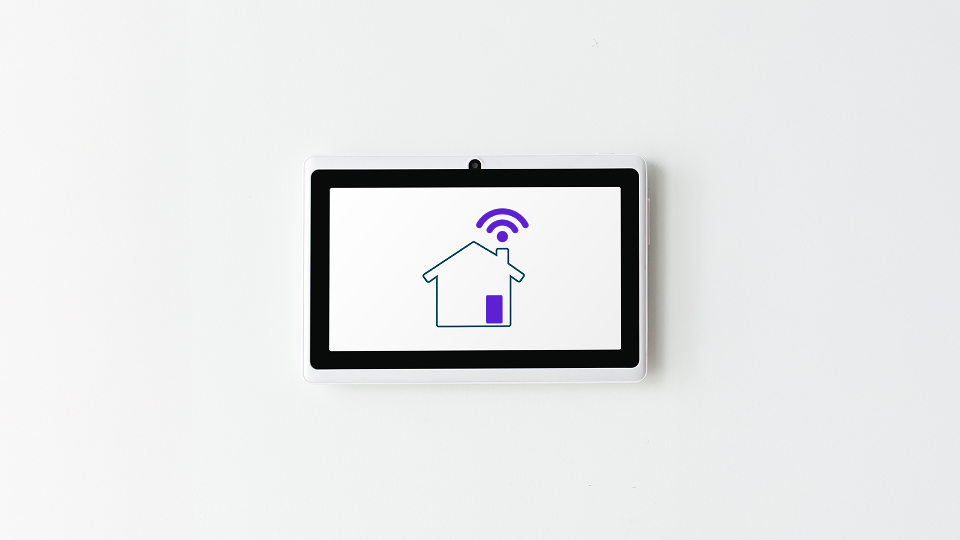By Patricia A. Pramono • Studio 1080, Published on March 23, 2025
TABLE OF CONTENTS
The world is more connected than ever. From smart refrigerators that remind us to restock groceries to voice assistants that manage our schedules, IoT has seamlessly integrated into our daily lives. It brings immense convenience and has transformed industries, optimized businesses, and even improved healthcare outcomes. Cars communicate with traffic systems, factories automate processes, and entire cities become "smart" with IoT-driven infrastructure.
But as technology evolves with speed, so do cyber threats. Every device that connects to the internet, whether a smartwatch, a security camera, or an industrial sensor, is a potential entry point for cyber risks. Unlike traditional computers and smartphones, many IoT devices lack built-in security measures, making them easier targets for hacking.
The implications go beyond individual users. Businesses, hospitals, and even governments rely on IoT devices to streamline and fasten operations. Yet, with billions of these devices online, the question arises: Are we unknowingly exposing ourselves to new risks?
Let’s break it down.
What Is IoT?
At its core, the Internet of Things (IoT) refers to a network of interconnected devices that communicate and share data over the internet. These devices are equipped with sensors, processors, and software, allowing them to function autonomously and interact with other systems.
To put this simply, picture this: Your smartwatch tracks your steps and syncs with your phone. Your smart doorbell lets you see who’s at your front door even when you’re away. Your car sends alerts when your tires need more air. That’s IoT in action, devices collecting, analyzing, and transmitting data with minimal human intervention.
According to TechTarget, IoT technology spans across multiple industries, from agriculture (smart irrigation systems) to healthcare (remote patient monitoring) and even urban infrastructure (smart traffic lights). But while this innovation fuels efficiency, it also exposes a massive security blind spot.
Why is IoT Important?
IoT represents a fundamental shift in how technology interacts with the world around us. IoT automates simple tasks and creates an interconnected ecosystem where devices, data, and decisions are seamlessly integrated to enhance efficiency, improve experiences, and even drive economic growth.
For businesses, IoT is a game-changer. It enables companies to optimize logistics, streamline production, and monitor equipment performance in real-time. Manufacturers use IoT sensors to detect machine failures before they happen, reducing downtime and saving millions in maintenance costs. Retailers track inventory levels automatically, while farmers monitor soil conditions remotely to increase crop yields with precision agriculture. The potential for increased productivity and cost savings is immense.
For governments and city planners, IoT is the backbone of smart city initiatives. Traffic lights adjust dynamically based on congestion patterns, reducing commute times. Waste management systems use sensors to optimize collection routes, saving resources. Public transportation networks analyze passenger flow to improve efficiency and reduce delays. These innovations lead to more sustainable, efficient, and livable cities.
On an individual level, IoT has already transformed how we live, work, and even take care of our health. Wearable devices track heart rates, sleep cycles, and fitness goals, helping individuals make informed lifestyle choices. Smart home systems enhance security, energy efficiency, and convenience by automating lighting, climate control, and even appliances. For those with medical conditions, remote health monitoring devices allow doctors to track patient vitals from afar, ensuring early detection of potential health issues.
But beyond convenience and efficiency, IoT also holds the power to drive innovation on a massive scale. Businesses and researchers are leveraging IoT to develop smarter AI models, enhance automation, and even autonomous vehicles and AI-driven manufacturing.
In summary, here are some key advantages of IoT:
-
Efficiency: Automates routine tasks, reducing human effort
-
Real-time Insights: Enables businesses to monitor and optimize operations
-
Cost Savings: Lowers labor costs and improves supply chain management
-
Smart Living: Enhances convenience through automation (e.g., voice-controlled lighting, security cameras, etc.)
With all these advantages, it's clear that IoT is the future of how technology integrates into our daily lives. However, as IoT adoption grows, so do its challenges, particularly in security and data privacy, an issue we can no longer afford to overlook.
IoT’s Security Gaps
In 2024, there were 18.8 billion IoT devices globally, marking a 13% increase from 2023 (Reported by Asimily). While this surge in connectivity brings convenience and efficiency, it also creates an attack surface for cybercriminals to exploit.
One of the biggest challenges with IoT security is that most devices were never designed with cybersecurity in mind. According to IBM, many IoT manufacturers prioritize speed-to-market and affordability over security, resulting in devices with weak authentication, outdated firmware, and lack of encryption. This means that even a simple smart device (like a security camera or smart lightbulb) can become an entry point for hackers to infiltrate entire networks.
IoT devices face an overwhelming number of attacks daily. The average IoT device is targeted 10 times per day, making them some of the most vulnerable endpoints in today’s digital age (Reported by Fast Company). These attacks often exploit three major security gaps:
-
Default Passwords and Weak Authentication
Many IoT devices come with preset, easily guessable passwords that users rarely change. Attackers can exploit these credentials through force attacks to gain control of entire systems. IBM highlights that credential stuffing attacks (where hackers use leaked usernames and passwords from previous breaches) are increasingly being used against unsecured IoT devices.
Also read: Stop Making These Common Password Mistakes
-
Unpatched Vulnerabilities
Unlike computers, laptops and smartphones that receive frequent security updates, many IoT devices don’t have automatic patching mechanisms. Some may never receive updates at all, meaning known vulnerabilities remain exposed indefinitely. Hackers take advantage of these flaws to install malware, launch Distributed Denial-of-Service (DDoS) attacks, or even spy on users through compromised cameras and microphones.
Also read: A Series of DDoS Attack Affecting Japanese Corporations ; Massive DDoS Attack Hits DeepSeek AI, Command Activity Surges 100x
-
Lack of Encryption in Data Transmission
Many IoT devices fail to encrypt the data they send and receive, making them susceptible to man-in-the-middle (MITM) attacks. This means that if an IoT device transmits sensitive data (such as security footage, medical records, or financial transactions) hackers could intercept and manipulate it without detection. IBM warns that this is particularly dangerous for industries like healthcare and finance, where compromised IoT devices could lead to breaches of sensitive information.
Also read: Top Cyber Attacks in 2024 and How To Prevent Them in 2025 ; Public Wi-Fi is Convenient but Risky! Here's How to Stay Safe
In some cases, hackers have also used IoT vulnerabilities to:
-
Hijack smart home devices to spy on users or launch attacks on other networks
-
Disrupt power grids and water treatment plants by exploiting industrial IoT sensors
-
Turn security cameras and routers into botnets to carry out DDoS attacks
Organizations and individuals alike must start treating IoT security with the same urgency as traditional cybersecurity measures to ensure that these devices are not just smart, but also secure.
Real Cases of How Hackers Exploit IoT Devices
-
Verkada Cameras Exploited to Spread Malware
Security researchers discovered that AVTECH IP cameras, used in critical infrastructure like healthcare and transportation, were targeted in August 2024. Hackers exploited an unpatched vulnerability to install Mirai malware, turning these cameras into tools for large-scale cyberattacks (Reported by Asimily). Even security devices like surveillance cameras can be used against us if left unpatched.
-
Matrix Botnet: IoT Devices Turned into Attack Weapons
In November 2024, a hacker group known as Matrix hijacked IoT devices worldwide, creating a massive botnet to launch Distributed Denial-of-Service (DDoS) attacks. They exploited unpatched vulnerabilities in smart home devices, routers, and industrial sensors (Reported by Fast Company). Unsecured IoT devices can be weaponized to disrupt global internet services.
How Do We Secure Our IoT Devices?
With the right approach, users and businesses can minimize risks and protect their networks from cyber threats. Here are some strategies to enhance IoT security:
-
Change Default Passwords
Many IoT devices ship with weak, factory-set passwords that are easy to guess or find in online databases. Always change these to strong, unique passwords immediately after setup to prevent unauthorized access.
Also read: Stop Making These Common Password Mistakes
-
Update Firmware and Software Regularly
IoT devices often lack automatic updates, leaving them vulnerable to unpatched security flaws. Check for firmware updates manually and install them as soon as they become available.
-
Disable Unnecessary Features
Many IoT devices come with built-in functions that are rarely used but can be exploited. If a device includes remote access, Bluetooth, or Wi-Fi connectivity that you don’t need, disable these features to reduce potential attack vectors.
-
Segment Your Network
Keeping IoT devices isolated from your primary network helps limit the damage if one device is compromised. Businesses and homeowners should create a separate Wi-Fi network for IoT devices, preventing hackers from using a breached smart device to access more sensitive data.
-
Enable Multi-Factor Authentication (MFA)
Whenever possible, enable multi-factor authentication (MFA) or two-factor authentication (2FA) to add an extra layer of security. Even if hackers steal login credentials, MFA makes unauthorized access much more difficult.
Also read: Protect Your Accounts with 2FA – It's Easier Than You Think!
-
Monitor and Audit IoT Devices
Regularly review which devices are connected to your network. Remove or disable outdated or unused IoT devices, and ensure that all active devices comply with the latest security standards. Businesses should implement continuous monitoring solutions to detect suspicious activity in real time.
-
Invest in Security Solutions
For enterprises, investing in IoT-specific cybersecurity solutions is crucial. A robust security system can help detect and mitigate attacks before they cause significant damage.
-
Verify Manufacturer Security Practices
Before investing in a lot of IoT devices, research the manufacturer’s security policies. Opt for brands that provide frequent security updates, strong encryption, and clear data protection policies.
-
Adopt a Zero-Trust Approach
Businesses should implement a zero-trust security model, where every device and user must be verified before gaining access to critical systems.
Final Thoughts
With more devices coming online daily, security should never be an afterthought. Businesses and consumers alike must demand stronger security measures from IoT manufacturers and take proactive steps to protect their own networks.
At Cisometric, we help businesses secure their IoT ecosystem, detect vulnerabilities, and prevent cyber threats before they happen. Want to know if your organization is at risk? Let’s talk.
Contact us today, click here.
Reference:
What is the Internet of Things (IoT)?
Why your IoT devices are the weakest link in security
The Top Internet of Things (IoT) Cybersecurity Breaches in 2024






